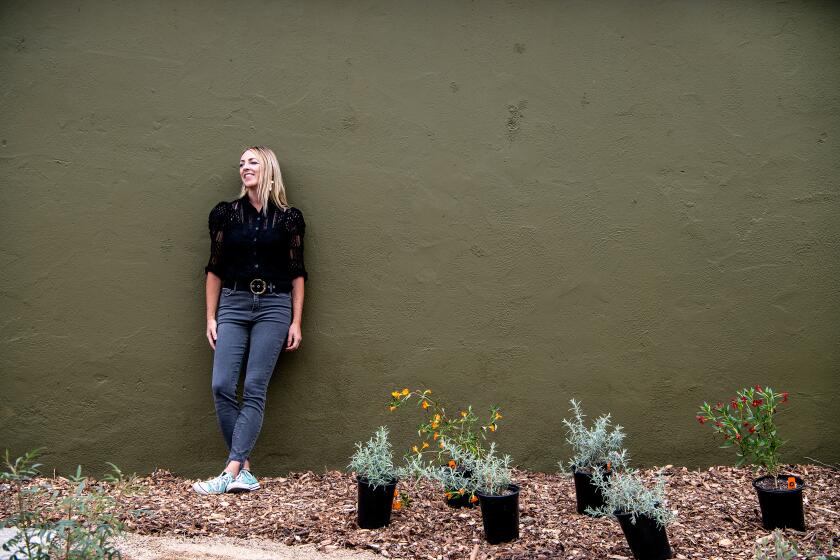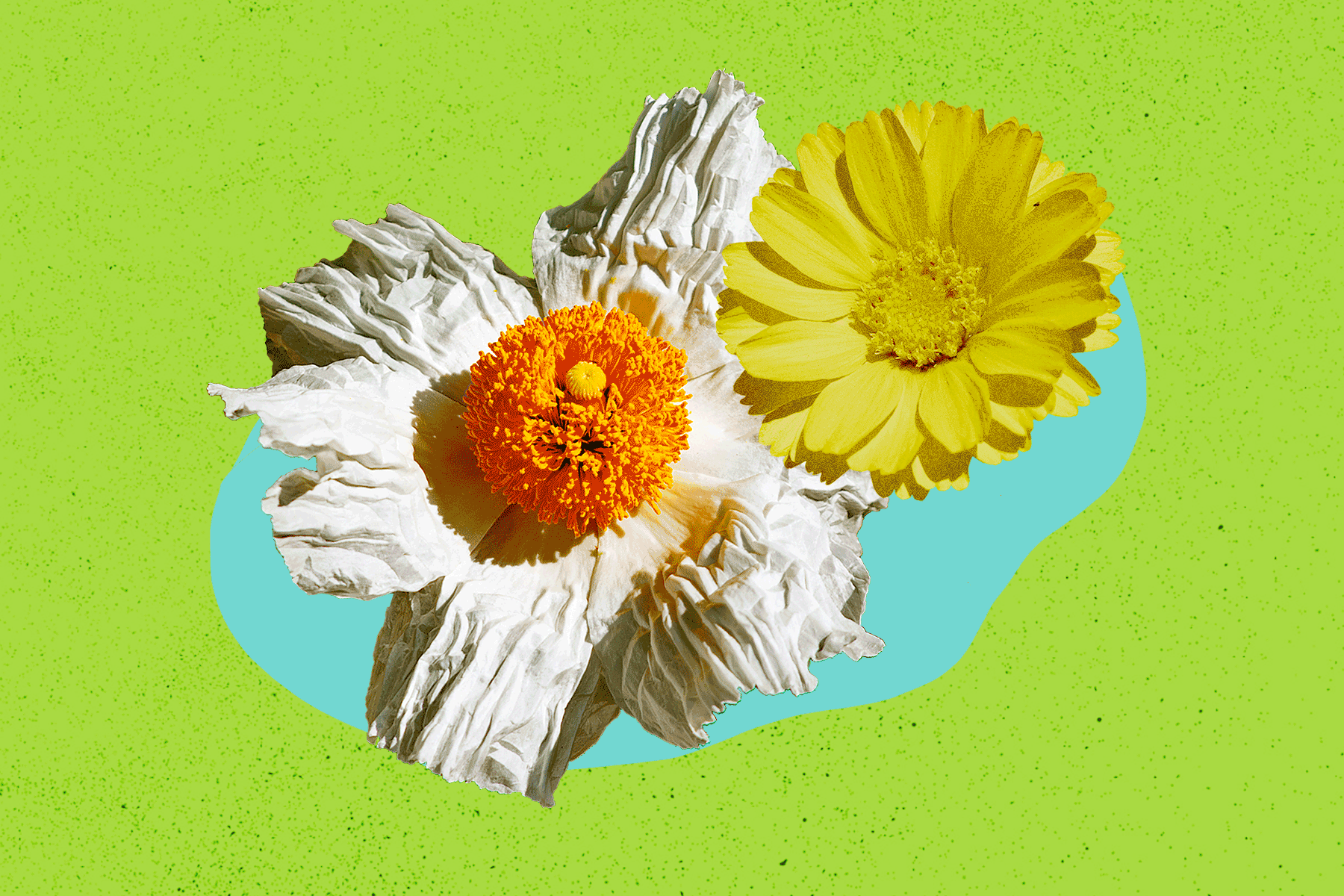
- Share via
Water-hungry lawns are symbols of Los Angeles’ past. In this series, we spotlight yards with alternative, low-water landscaping built for the future.
Long before the Metropolitan Water District of Southern California declared a water shortage emergency and ordered outdoor watering limited to two days a week, Sarah Lariviere, an avid gardener, was thinking about ways to conserve water.
During the pandemic, the young-adult author found inspiration on the long walks that she and her husband took in their Burbank neighborhood. It wasn’t the endless series of lush green lawns that moved her, however, but the occasional drought-tolerant landscape that would materialize, sandwiched between the turf.
“I grew up in the Midwest so I was drawn to the nonlawn landscapes,” says the 46-year-old. “I love the wild look of colorful wildflowers.”
Southern California officials have declared a water shortage emergency. Here’s how to keep home and garden dreams alive while still restricting water usage.
Precipitated by three years of record drought in California, Lariviere decided to educate herself about waterwise gardening. She took an in-person class on California native plants at the Theodore Payne Foundation for Wildflowers and Native Plants. She consulted the SoCal Water Smart website, which offers step-by-step guidelines on how to transform your lawn using drought-tolerant alternatives to grass. She took an online class on turf removal taught by Green Gardens Group. When she learned that Burbank residents can request up to three shade trees for their homes, she researched what trees would best suit her microclimate.
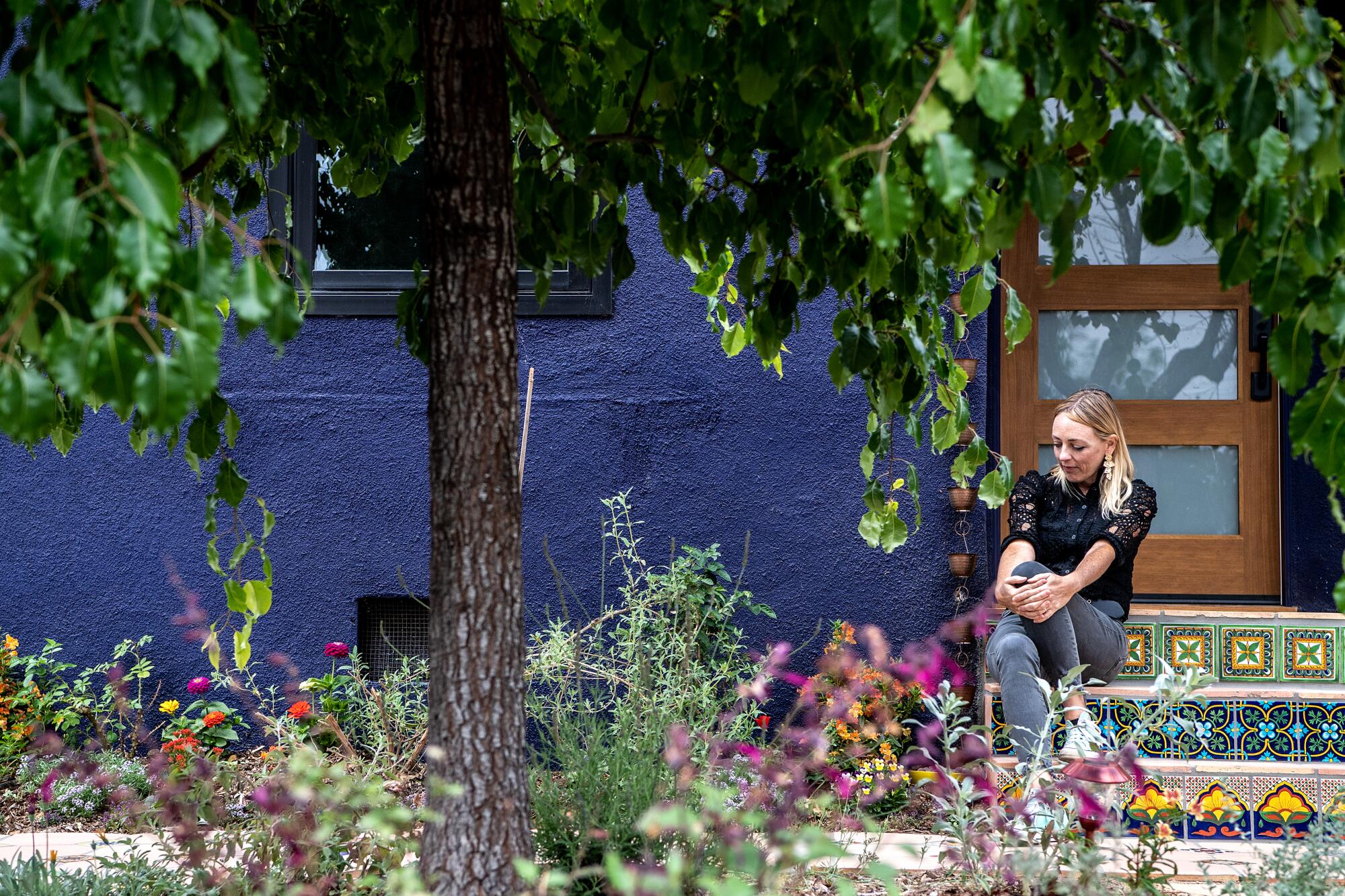
After first renting elsewhere in Burbank, Lariviere and her husband, Tim Mapp, bought a 1940 bungalow in March 2021. By then, Lariviere felt prepared to tear out the lawn and install a low-water landscape.
Her goal for the garden, she says, was “to increase the biodiversity in our landscape, conserve water, provide habitat for butterflies and birds, and enjoy the scent and beauty of native plants, trees and flowers.”
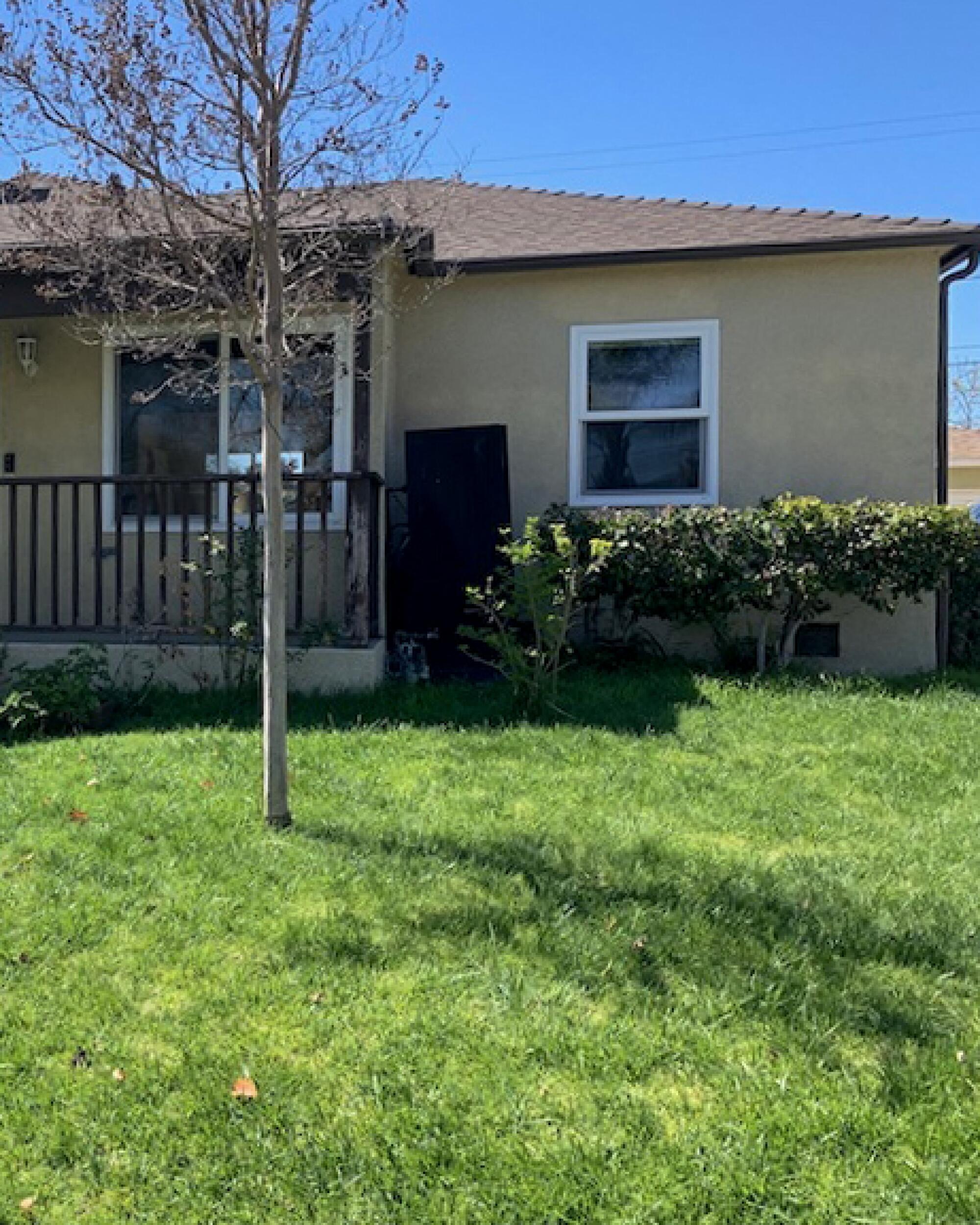
One month after purchasing their home, the couple removed the Bermuda grass. “We dug it out by hand using shovels and a pitchfork,” she says. “Sometimes we had to water it so that it would be pliable enough for us to remove. I won’t lie, it was backbreaking.” They previously lived in Texas and tried sheet mulching there, but “the grass kept coming up through the cardboard.”
The couple ultimately removed approximately 2,500 square feet of lawn, including the front lawn, parking strip and backyard. Working in the blistering heat of summer, they eventually rented a sod cutter from Home Depot, which costs about $97 a day, to help them finish the job.
Although she felt self-conscious about removing the grass so soon after moving into a neighborhood full of manicured lawns, Lariviere was pleased to find that her neighbors didn’t mind.
“We met so many neighbors who wanted to know how we were taking out our lawn,” she says. “They would stop all the time and say nice things. It was really encouraging.”
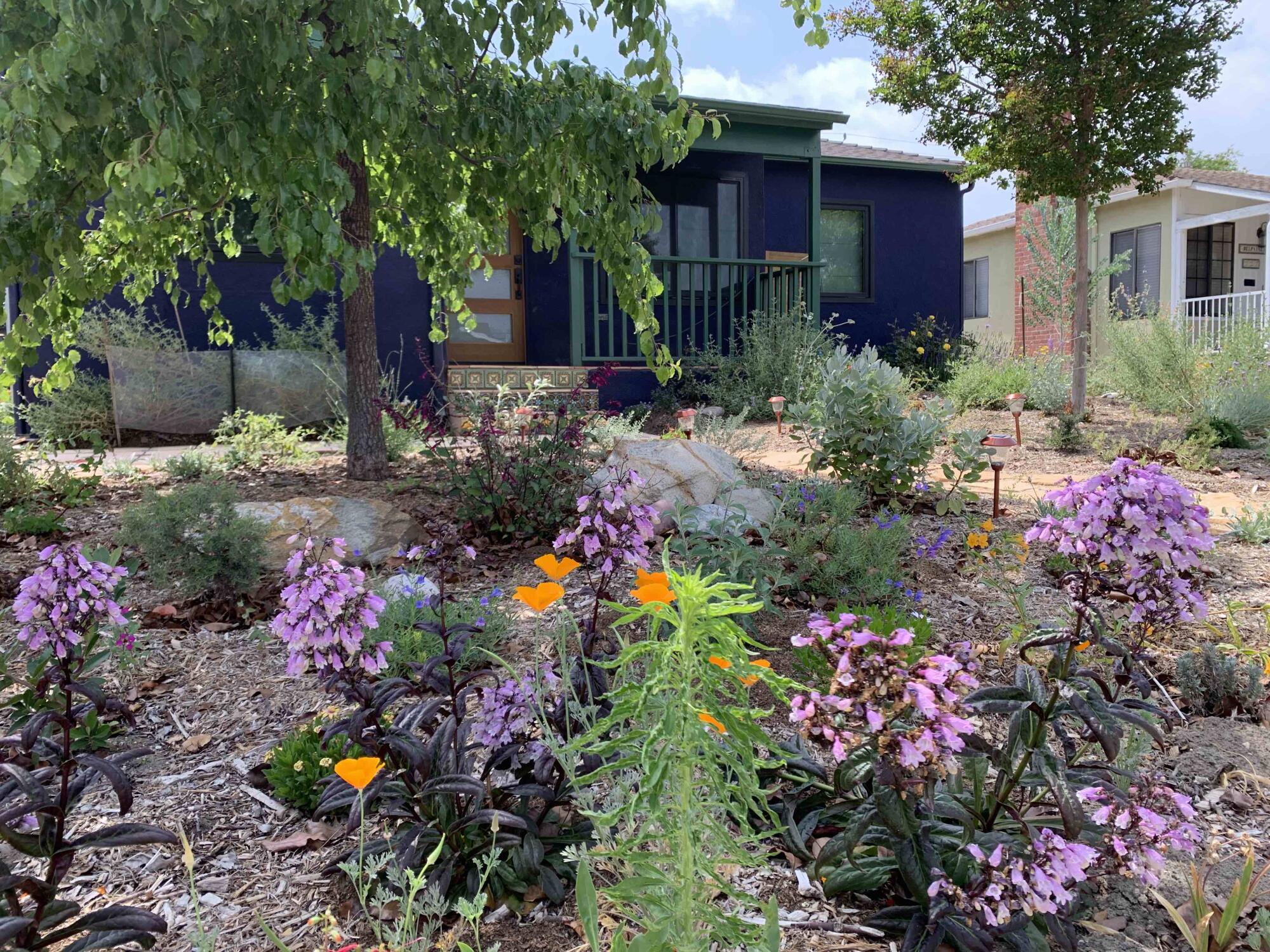
After creating a planting plan by consulting the Socal Water Smart website, Lariviere submitted it to the Metropolitan Water District of Southern California for a turf removal rebate.
The landscape project was completed in six months, and Lariviere says she received a rebate check for $4,700 shortly after an MWD representative came out to assess her property. The check paid for the entire project, excluding handcrafted Mexican tile from Colores de Mexico in East Los Angeles.
“I’m highly motivated,” Lariviere says. “I have a long-standing interest in gardens and landscapes and felt really excited about having so much space to play with. I’m not going to say it didn’t take time. But it was really fun.”
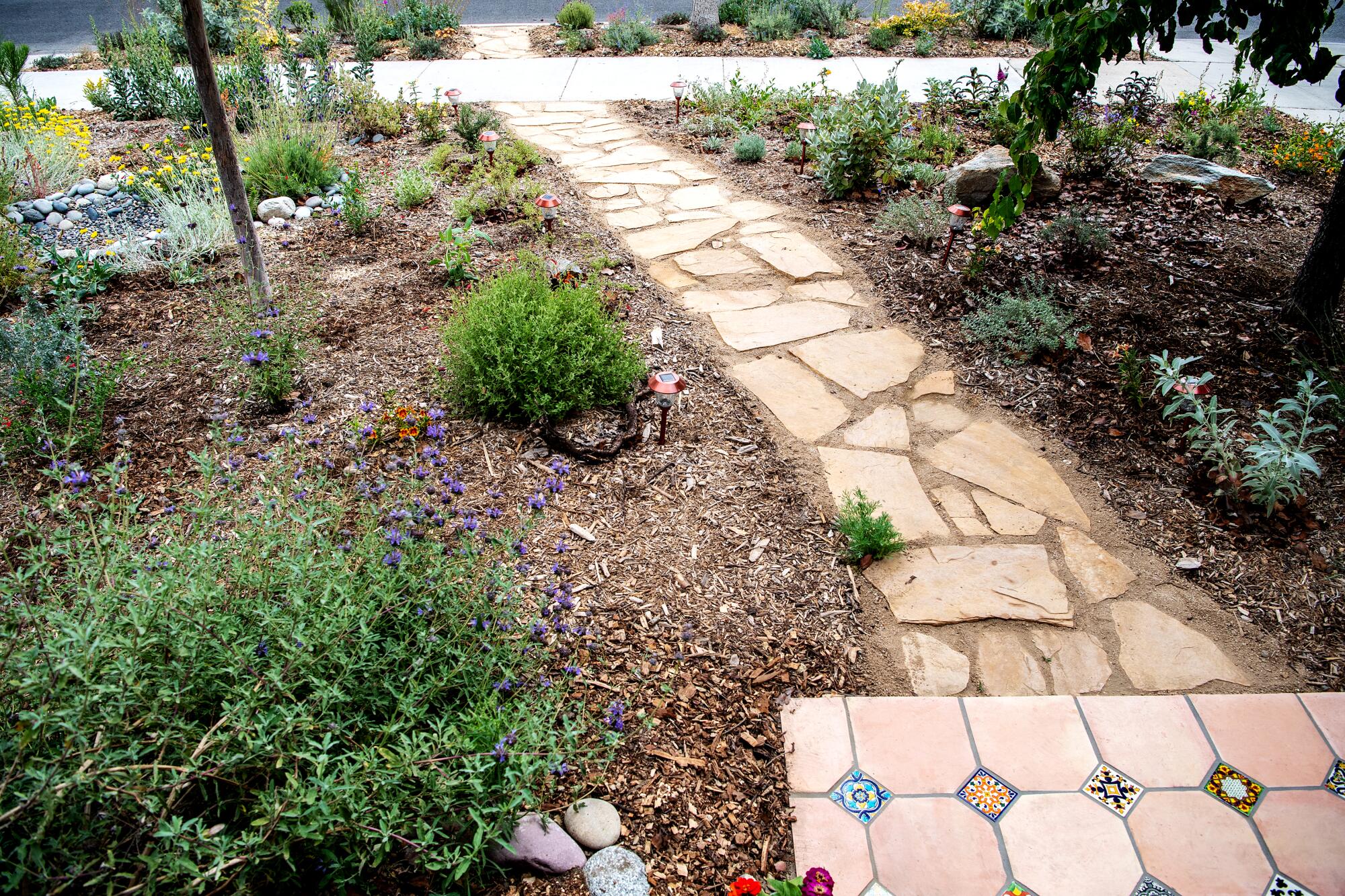
In the front yard, Lariviere installed a walkway paved with yellow Arizona flagstone and planted mostly California natives: penstemon, monkey flowers, California fuchsias, desert mallow, fragrant pitcher sage, Apache plume and stunning pink clarkia that makes a statement along the side of the house, which she painted a Frida Kahlo-esque blue-black color.
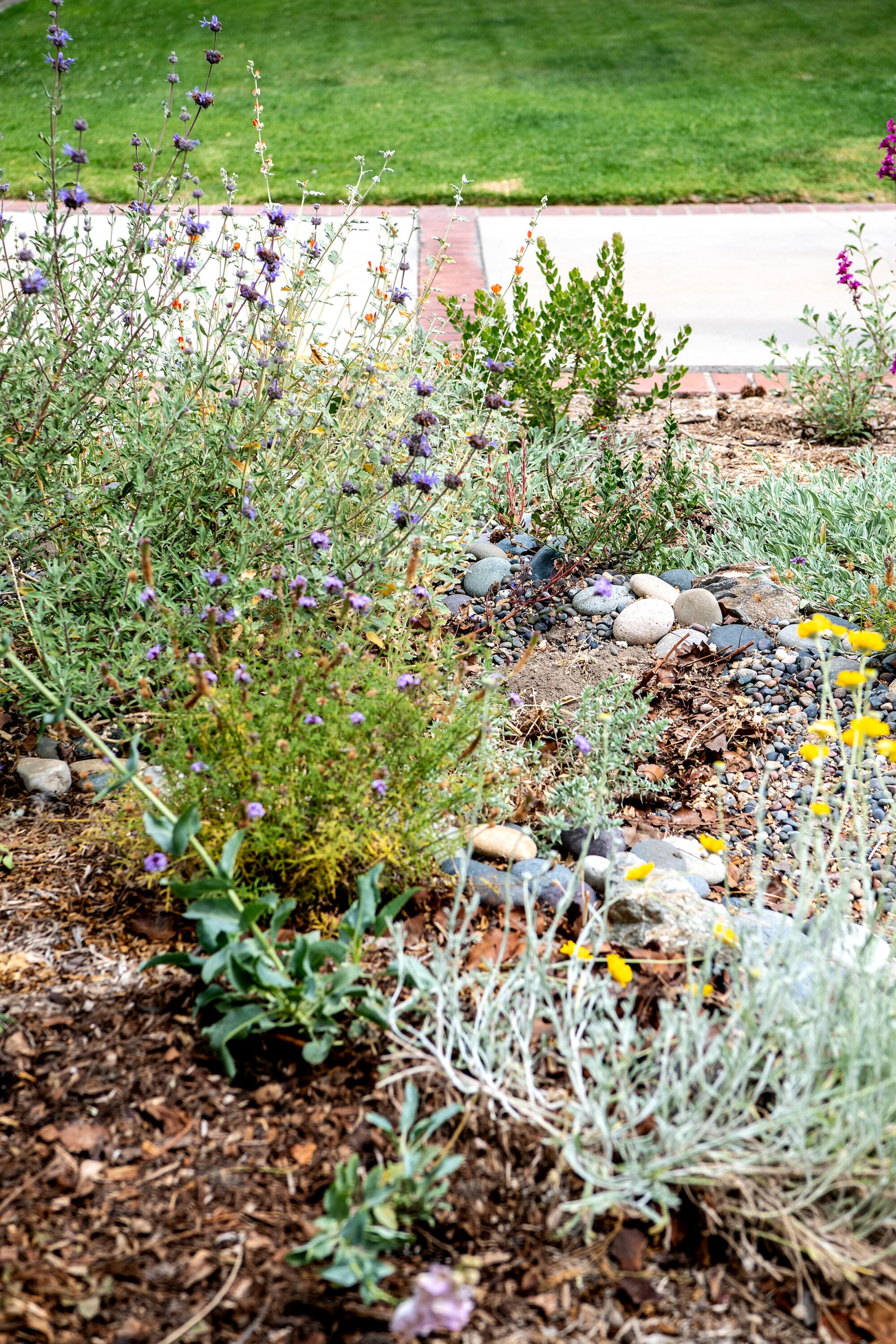
On the parking strip, she planted white sage, rock purslane, germander sage and ice plant and scattered Theodore Payne’s roadside wildflower mix, which was a magnet for bees before gophers went after the plants.
The backyard is more eclectic, with a mix of natives, succulents and edibles growing haphazardly throughout the landscape, including tomatoes and herbs in two galvanized steel troughs with “hugel bottoms” (bottoms removed to provide soil contact and then filled with sticks, manure and compost). To attract native insects, Lariviere scattered an assortment of wildflower seeds from Theodore Payne, including No. 1 Rainbow mix, No. 2 Shady mix and No. 6 Roadside mix, which put on a show thanks to the flowers’ dynamic array of colors, shapes and textures.
Southern California officials have declared a water shortage emergency. Here’s how to keep home and garden dreams alive while still restricting water usage.
A hugel raised bed made of sticks, chicken manure, soil, compost and leaves helps to retain water and provide water to neighboring plants. Several small fruit trees will add beauty and fruit to the garden, including kumquats, bearss limes, Meyer lemons, satsuma tangerines, pineapple guavas and Buddha’s hand citrus. A coast live oak tree planted next to the circular fire pit Lariviere designed and built will eventually offer shade during hot Burbank summers.
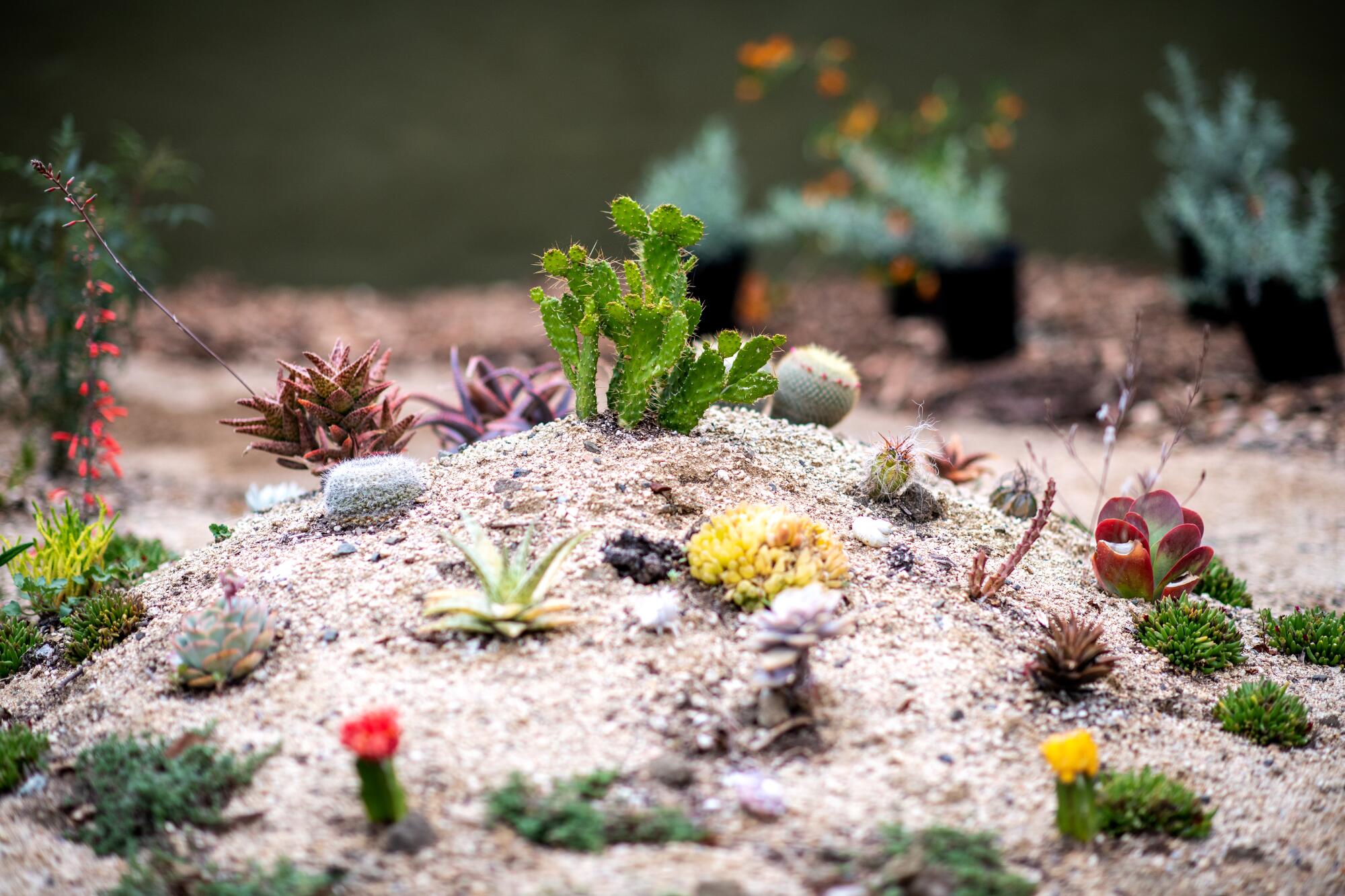
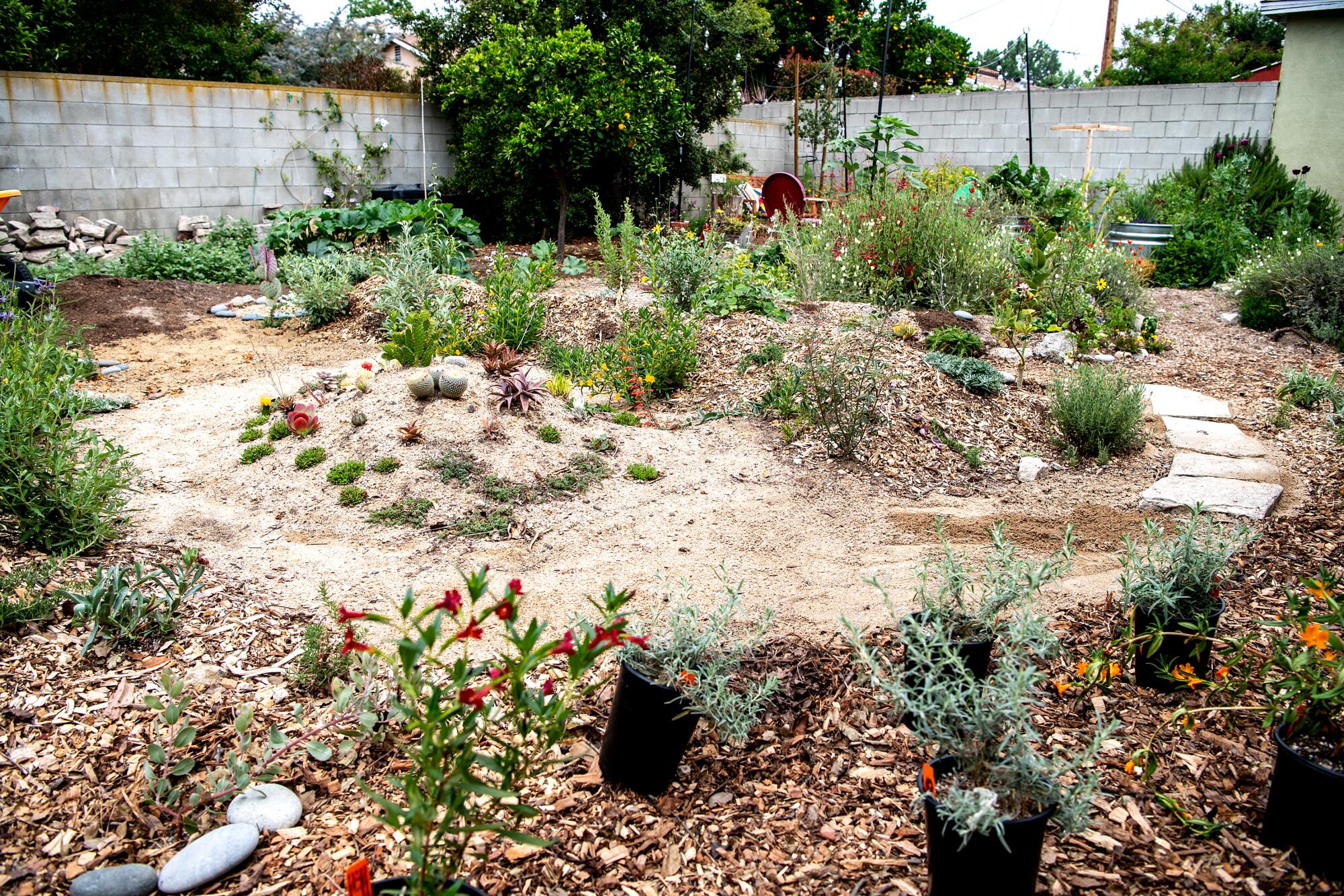
More than 25 carloads of mulch from the city of Burbank’s free mulch program helps to keep the soil moist, along with a dry riverbed that Lariviere lined with rocks and pebbles. When it rained in December, she was delighted that the riverbed she contoured according to the California Friendly & Waterwise Landscaping Guidebook did what it was designed to do: capture rainwater from the roof.
Looking ahead, Lariviere hopes to add a greywater filtration system, irrigate the young fruit trees, add a water feature for wildlife without encouraging mosquitoes, paint the concrete walls and someday, when everything is established, open her garden to others as part of Theodore Payne’s annual native plant garden tour.
Even California native plants can dry out in the summer. But these varieties will still look good in Los Angeles yards and gardens during the hottest months.
Lariviere’s garden stands out as a colorful and delightful surprise on her block full of lawns. It is evidence that you can have a beautiful garden without using a lot of water.
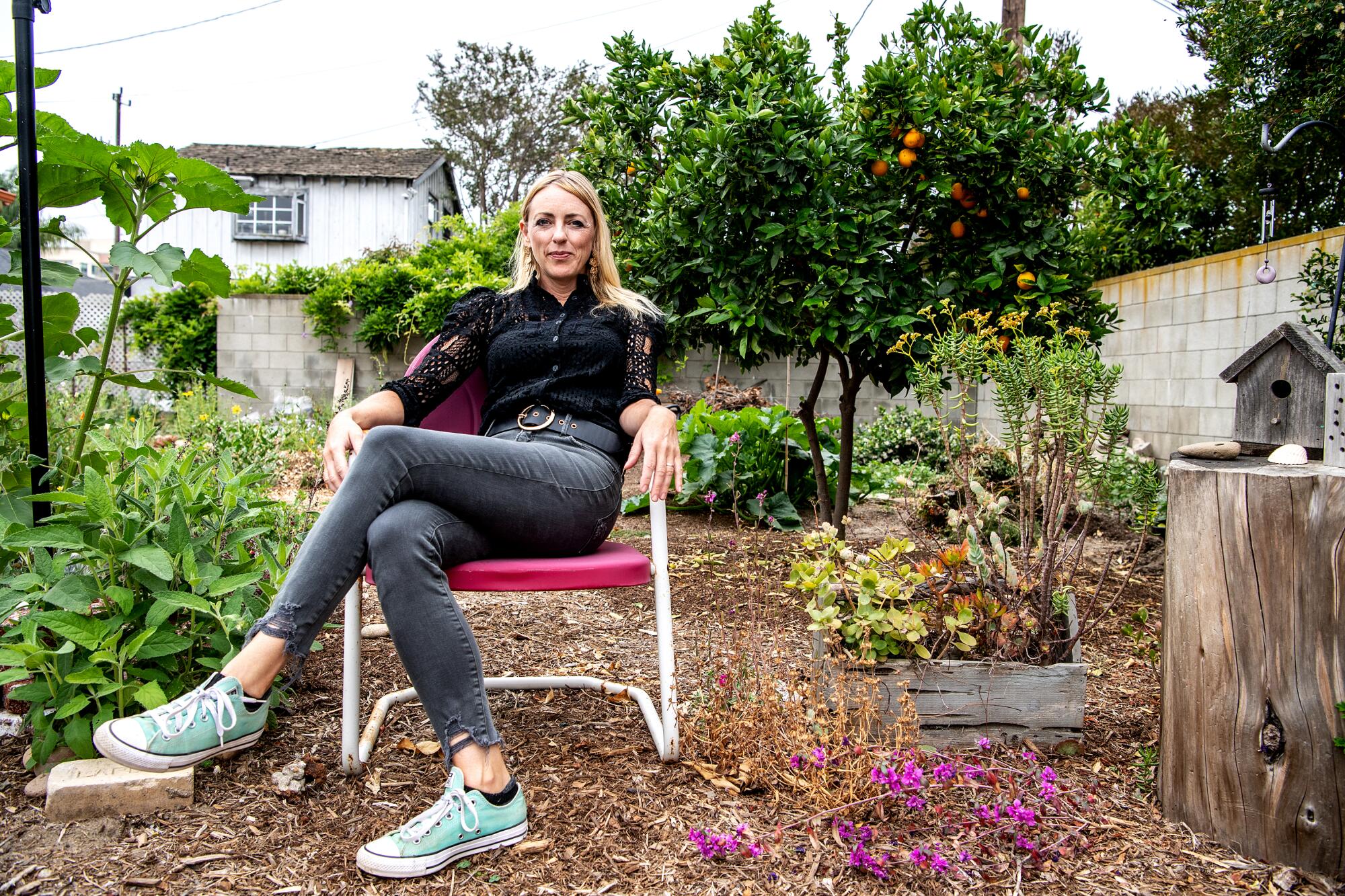
“I’m amazed by how little we water,” she says. When it rained in December, the rain provided sufficient water for the wildflowers to grow. “I keep an eye on all the new plants to make sure they are OK. Now that it is warming up, I’ve tried to do each section once every 10 days. That means we have three watering days. I try to keep it to 20 minutes if it’s a tree or one of the newer natives.”
Of course, not everyone is about to give up their beloved lawns. Still, Lariviere hopes her native oasis will inspire others to consider low-water alternatives.
“It’s not lost on me that having a garden is a luxury,” she says as she pulls a few stray weeds from her front yard. “Overall, I have learned that I like a little chaos. I would rather just throw in something that I love and not worry about the planning so much. The garden reflects that. It’s so beautiful, and we can all enjoy the bees, butterflies and birds. It sounds like ‘Snow White’ out here.”
Did you tear out your lawn and replace it with drought-tolerant plants? We want to hear from you.
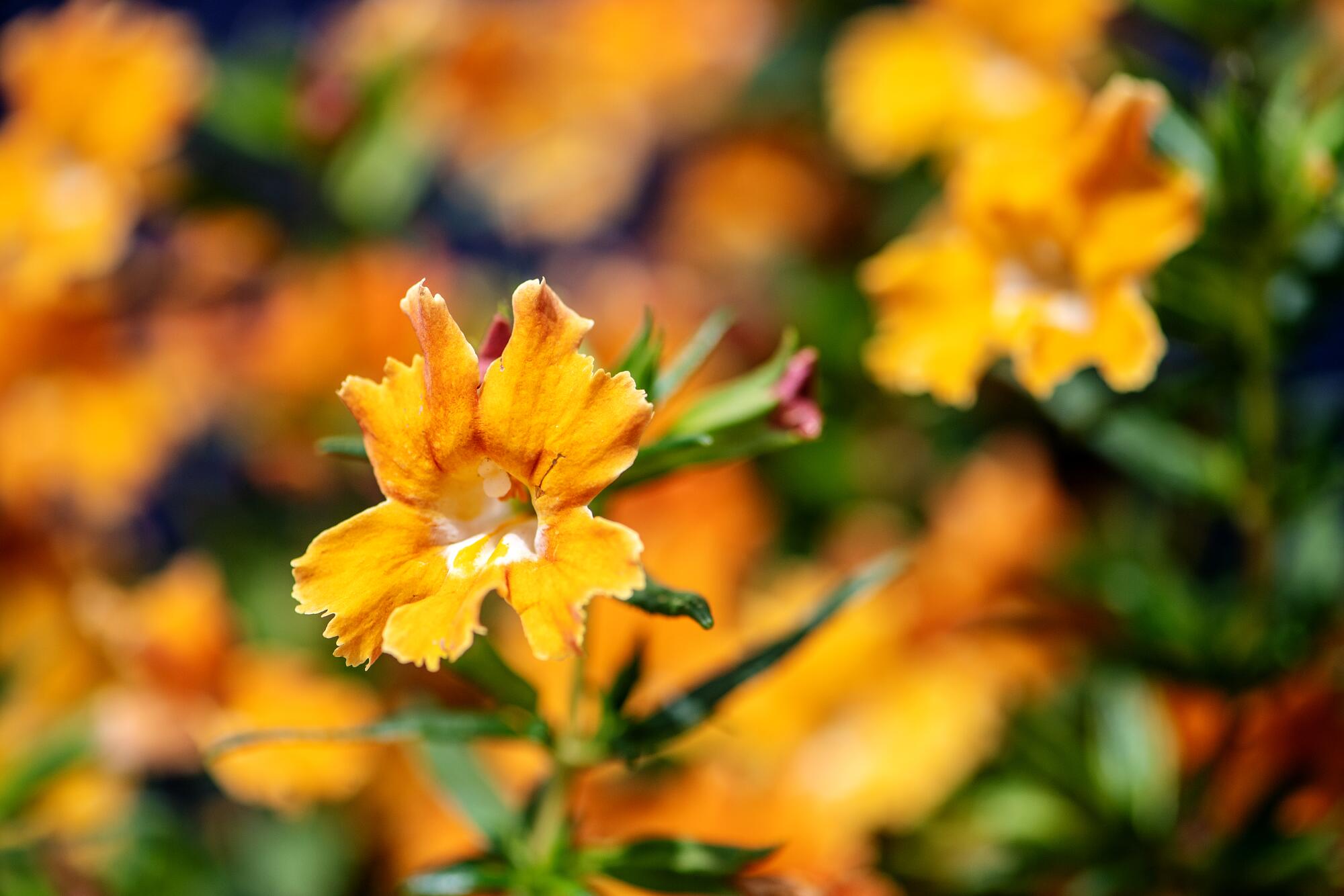
Native plants used in this garden
- Canyon sunflowers, Venegasia carpesioides (fast to establish, rangy, cheerful)
- Desert Globemallow, Sphaeralcea ambigua (growing nonstop since October)
- Fragrant pitcher sage, Lepechinia fragrans (smells heavenly, grows fast, velvety leaves)
- Apache plume, Fallugia paradoxa (a shrub with stunning feathery seeds and elegant white flowers)
- Allen Chickering sage, Salvia ‘Allen Chickering’ (fast-growing, gorgeous purple flower ringlets)
- White sage, Salvia apiana
- Chaparral clarkia, Clarkia affinis (tall hot pink, orange-pink, reddish and white wildflowers)
- Penstemon (margarita, black, firecracker and many more)
- Monkey flower, Diplacus aurantiacus (yellow, orange, red and variegated)
- Torrey Pine tree, Pinus torreyana ssp. torreyana
- California fuchsias, Epilobium canum (red and salmon)
- Sages (Cleveland sage, Salvia clevelandii; Amethyst Bluff sage, Salvia leucophylla ‘Amethyst Bluff’ ; and Shirley’s Creeper sage, Salvia ‘Shirley’s Creeper’)
- Trees (Toyon, Heteromeles arbutifolia and coast live oak, Quercus agrifolia)
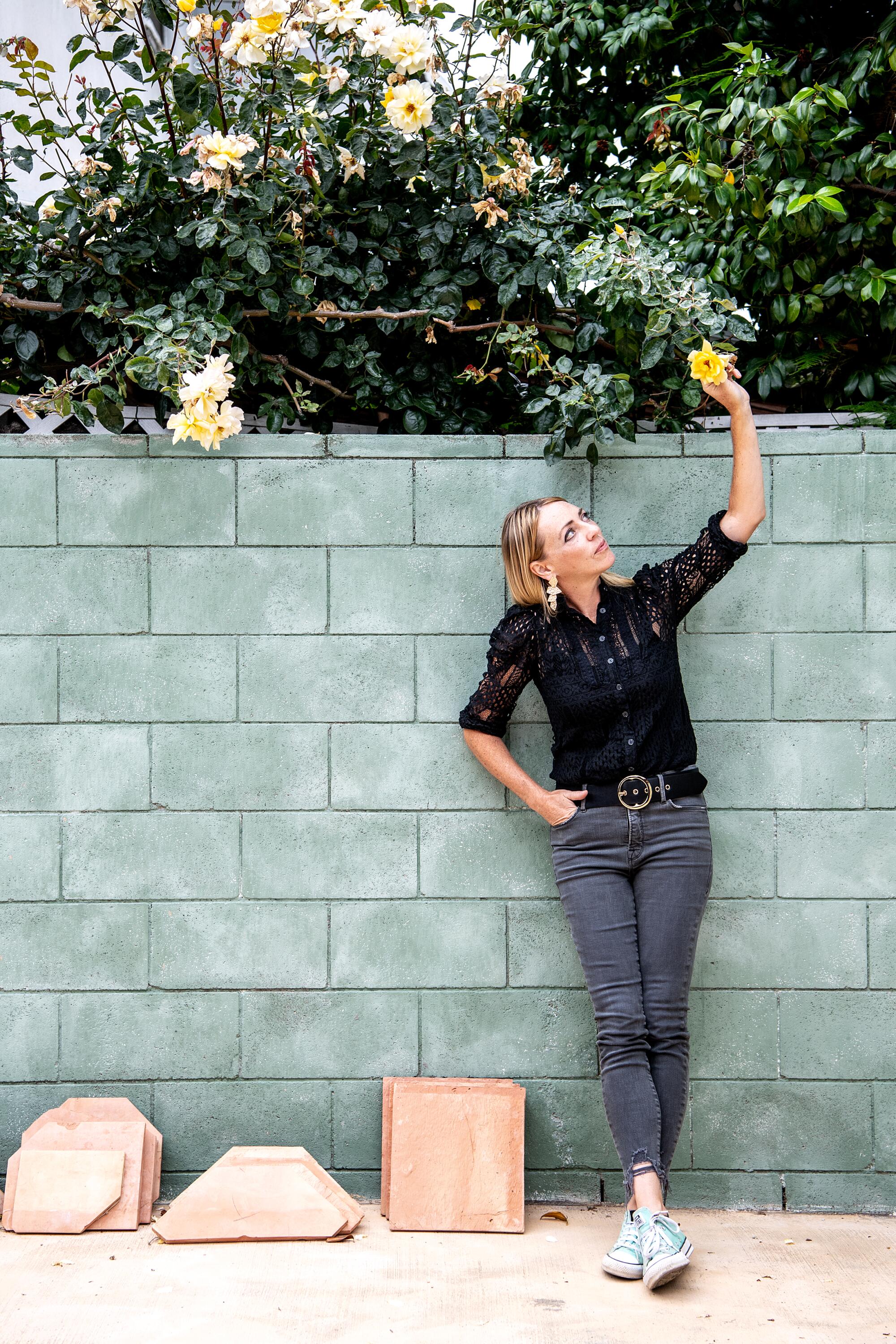
Helpful resources for waterwise gardening
- The Waterwise Garden: Designed by Nature by the Metropolitan Water District of Southern California
- Inland Valley Garden Planner
- California Native Plant Society
- Bewaterwise.com
- Socalwatersmart.com
- California Friendly Maintenance Guide
- Free mulch, city of Burbank
- Virtual classes on tearing out your lawn, irrigation, soil, garden design from Green Gardens Group
- Theodore Payne Foundation for Wild Flowers & Native Plants
- California Native Plant Society’s Calscape
- Homegrown National Park
- UC Master Gardener Program
More to Read
Sign up for This Evening's Big Stories
Catch up on the day with the 7 biggest L.A. Times stories in your inbox every weekday evening.
You may occasionally receive promotional content from the Los Angeles Times.
